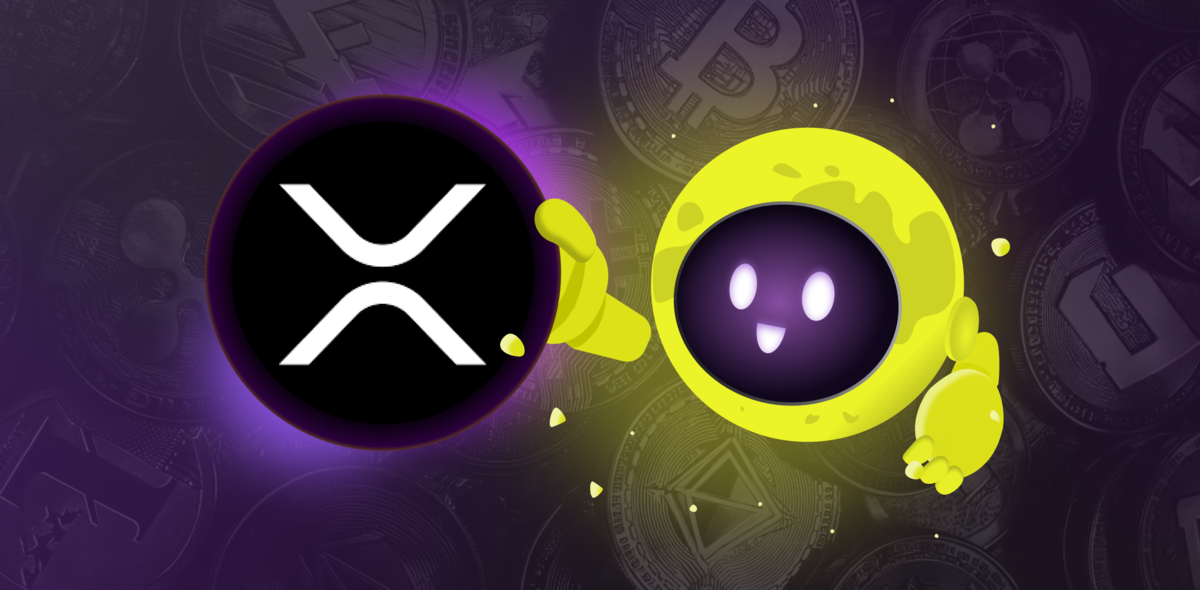
When transferring cryptocurrencies between wallets, all existing blockchains charge a fee in the form of a fee, which is a reward for mining or stacking (PoW or PoS). Each network has its own fee policy and it depends on many factors; its number varies throughout the day, and network congestion factors and transaction sizes in bytes are taken into account.
In this article, we will not discuss manually calculating the optimal fee, because after a while, the information may become irrelevant due to changes in mining or cryptocurrency transfers to another system of work, but we will figure out how exchangers and P2P transactions and scanners sites work, and according to what principles the fee is charged for transfers to various blockchain networks.
What Is a Blockchain Network Fee?
A blockchain network is a chain of blocks that consists of confirmed transactions.
The blockchain network fee is the fee that the sender pays to make a payment in cryptocurrency.
The fee is mandatory and it performs two important functions:
- It supports miners/validators who help fix the payment process and confirm transactions in the blockchain. When processing payments, miners first choose transactions with the best ratio of size to fee; in this way, they increase their own profit.
- It’s an important factor in ensuring the security of a network and protecting it from spam attacks. It works as a tool against hackers attempting to attack the network by initiating a large number of simultaneous operations. Because it is too expensive to run several hundred thousand transfers with a fee.
The fee size also regulates the order of operations with cryptocurrencies worldwide; the larger the fee amount, the faster the transfer will be processed and confirmed. Initially, payments could be sent not only through a fee but also for free. The waiting time for the confirmation of free transactions did not exceed 25 min, so there were most of them. However, with the growing popularity of cryptocurrencies, the number of payments has increased, and fees have become mandatory.
Cryptocurrency transaction fees depend on the network used. For example, Bitcoin, Ethereum, Litecoin, and Tether (USDT) are characterized by different transaction fees.
What Affects the Number of Fees?
The size of fees can vary greatly depending on the cryptocurrency, its purpose, popularity, and the consensus algorithm. However, it is possible to identify the main factors that make up the number of fees for cryptocurrency transfers.
- The workload of the blockchain network: the more transactions, the higher the fee.
- Urgency/importance of the transaction: Important transactions may require an increase in fee for fast processing.
- The number of inputs. Any bitcoin is actually a link (it is also called an "entry") to transactions that were carried out earlier in order to increase capital. This link is transmitted during translation. If the crypt unit is obtained from different sources, it contains several links that affect the size of the fee.
- The number of outputs. The outputs are the addresses to which payments are sent. Most operations involve one or two outputs, but there may be more outputs. The more they are, the more expensive the transaction will be.
- The complexity of the script. The transaction-processing functionality is quite wide and allows the use of various options, such as multiple signatures. They increase security, but also significantly increase the weight of the transaction.
- Transaction Size: A larger transaction size may lead to an increase in fee
- Network Status: If the network is overloaded, miners can set higher fees to process transactions faster
- Type of cryptocurrency
How Are the Bitcoin Fees Charged?
The fee when paying with Bitcoin is indicated by the user at the stage of setting the parameters of a financial transaction. When the payment is confirmed, the fee is debited from the sender's account along with the transfer amount. For example, the sender plans to transfer 0.2 BTC and charges a fee of 0.0006 BTC; therefore, the total amount of the payment will be 0.2006 BTC.
The amount of the fee can be calculated independently or can specify the so-called recommended fee, which provides recommendations on the amount of the fee at a specific moment, calculating it so that the transfer is included in the nearest block. The recommended fee is usually used by senders experiencing difficulties in self-calculating the fee. You can obtain recommendations on specialized resources, or directly in wallets or on exchanges in the process of sending a transfer.
The transfer amount does not affect the fee, but it is worth remembering that the fee for the services of miners is directly dependent on the "weight" of the transaction — the program code, which is measured in bytes. For example, the transaction size is 200 bytes and the average transaction fee is now 70 satoshi per byte. In this case, you will have to pay approximately 14,000 satoshi (0.00014 BTC).
How Are Ethereum Fees Charged?
The fee for transactions on the Ethereum network does not work in the same way as Bitcoin does. This network evaluates its fee in gas, which is a special pricing unit that measures the amount of computing resources spent on an operation. Gas in ethers has also been estimated. The total fee for the operation determines the ratio between the amount of work (required computing power) and the gas price.
The amount of gas required for a transaction usually does not change, whereas the price is subject to fluctuations depending on traffic. Tasks that require more resources are more expensive. Miners prefer more expensive operations; therefore, conducting small transactions may not be as profitable for users. Transactions with a small fee will also be processed, and there is a chance that you will have to wait a little.
How to Minimize Fees For the Transfer of Cryptocurrencies?
There are several strategies and tips for minimizing fees when working with cryptocurrencies.
One strategy is to choose the right moment to send a transaction. During peak network load periods, fees can be very high; therefore, it is worth sending transactions during periods with less load.
It is also worth using tools to evaluate fees. Some wallets allow the estimation of the optimal fee for a transaction so that it is processed quickly and with minimal fee.
Another way to minimize fees is to use Layer 2 solutions, such as the Lightning Network for Bitcoin or Plasma for Ethereum. These solutions allow transactions to be processed faster and at lower fees.
In general, the steps that need to be taken to minimize fees when transferring cryptocurrencies depend on the method used.
Exchanges and hot wallets
The process of calculating the fee when transferring cryptocurrencies on the exchange or through a hot wallet is carried out automatically using built-in algorithms. In some cases, if we are talking about the same Metamask or other similar wallets, you will be shown the recommended fee with the possibility of increasing it to make your transaction a higher priority.
On the exchange or in the wallet application, select the cryptocurrency you are interested in. Then, proceed to the action, which implies a conclusion.
Please note that immediately after choosing a network, you will be notified of its fee. Sometimes, its range can be quite high, but when transferring through the exchange, you will not encounter the problem of a transaction hanging, since the fee will be calculated automatically in any case.
If you make a transfer between wallets in the same exchange or wallet application, it may be detected automatically, or you will need to fill out a form via email or a username. Many projects do not charge a fee for such transfers but set a daily limit.
Exchangers
An online exchanger is an available option for transferring or exchanging cryptocurrencies into fiat without using exchanges. There is a huge number of sites providing such services. Usually, their fee is already embedded in the price of the cryptocurrency itself; that is, its rate will be slightly lower than the exchange rate. In addition, on the sites for monitoring exchanges, one can see information about whether there is an additional fee from a particular site.
Simultaneously, they do not forget to read the information in the exchangers when filling out the data for exchange. Perhaps a fee will be indicated somewhere under the form, or you will notice on your own that a lower rate replaces this fee, due to which such a site receives its profit.
If you are going to use such exchangers, be sure to choose proven ones added to monitoring sites, and do not hesitate to contact support if you have any questions about filling out the form before the exchange. SwapSpace has partnerships only with reliable exchangers who sign SLAs that spell out the rules of cooperation so you can be sure that our partners are trustworthy. If you have any questions, contact our support team who is on duty 24/7.
Scanners
For all networks, the blockchain has its own scanning sites that display the current cryptocurrency price, market capitalization, transaction history, and often, the average fee on the network at the moment. You can utilize this information to expand upon it when manually inputting the fee. Ethereum has its own website scanner that displays the number of transactions, along with the average price for gas.
The website for accessing information about the blockchain from Binance has a similar appearance. Most likely, this information will only be relevant to a few units, as the fee in this network is almost always minimal and occurrences of freezing due to too low gas fees are extremely rare.
Separately, if you are interested in the fee for transferring Bitcoin, you should address the Blockchain website. You will need to determine the size of your transaction in bytes and then calculate the fee you will receive based on the specified price per byte. The displayed information does not change very often, but it is almost always relevant. If you are concerned about your transaction, you can set a fee slightly higher than the recommended amount or assess the fee based on a list of recent transactions conducted by other users.
P2P Transactions
One of the best methods of conducting cryptocurrency transactions is peer-to-peer (P2P). This applies to situations when you want to exchange your rubles, dollars, or any other fiat currency for cryptocurrency, or vice versa - withdraw funds from the exchange. There is no fee for peer-to-peer (P2P) transactions on Binance, and this is also applicable to many other exchanges.
The only drawback of such transfers is the requirement to have funds on the exchange or to initiate it with a subsequent transfer to your cold or hot wallets. In the following manipulations that go beyond P2P, the network fee will already be present, and it will have to be determined, as shown in the previous sections of the article.
In this article, you will find basic information on how to determine the fee for cryptocurrency transfers. In many cases, when you send it, you will receive information within the form itself about the gas fee. However, if there is no such data, determining approximate values should not be difficult.
Conclusion
Transaction fees have always been an integral part of the financial and investment services sector, including within the realm of cryptocurrencies. This is because the fees collected are used by exchanges to operate their business, enabling them to offer investors opportunities to invest in cryptocurrency. In addition, fees for transactions in the crypto network are necessary because their payment incentivizes miners to continue fulfilling their role in maintaining the blockchain network.
However, due to the increasing fees associated with traditional bank transfers, a growing number of people worldwide are turning to cryptocurrencies as a means to transfer or receive funds from abroad. The reason is that many people are beginning to realize that cryptocurrency transactions are fast and economical.




